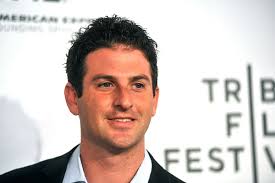The tragic events in Kansas City this weekend stirred up some uncomfortable questions for the NFL. Jovan Belcher, a Kansas City Chiefs linebacker, killed his girlfriend and then himself on Saturday, ending a promising career and leaving their 3 month-old daughter without her parents. Suicides have become an increasingly worrying issue for the NFL in recent years, particularly after the death of the ex-Patriots player Junior Seau earlier this year.
Few sports are as physically demanding as American football, which frequently sees players making contact at high speed; however, there is increasing evidence that the huge force of tackles in football are causing long-term damage to professional players’ brains and bodies. 65 percent of players leave the sport with a permanent injury, which have been known to cause psychological problems.[1] The high occurrence of concussions in football is causing increasing concern among players, fans, and other followers of the sport as links are increasingly made between frequent concussions and permanent brain damage. According to Bleacher Report, the suicide rate among former NFL players is 6 times the national average.[2]
The fact that both Seau and former Chicago Bears player Dave Duerson both shot themselves in the chest in order to preserve their brains for medical research demonstrates the growing concerns among former players over the damage caused by frequent collisions on the field. It seems Duerson’s concern was justified – the study of his brain showed an advanced stage of CTE or chronic traumatic encephalopathy, which has many of the same symptoms as Alzheimer’s disease. It was first noticed among boxers in the 1920s, but in recent years it has become increasingly recognised among people who suffer frequent concussions – such as football players. By the end of his life Duerson was displaying many of the symptoms of CTE including memory loss, severe headaches, and mood swings. Most worryingly of all, at the NFL’s “Brain Bank,” or the Center for the Study of Traumatic Encephalopathy, of the 50 cases of CTE diagnosed so far, 10 killed themselves, while others died violently in incidents like car chases or drug overdoses – symptoms of lives that are out of control. [3]
However, it is not simply the NFL which suffers from high suicide rates among its players and former players. English cricketers are apparently twice as likely to kill themselves as the average male, suggesting that high-profile sports players are under significant pressure around the world.[4] Cricket is, of course, a non-contact sport, so the high-speed, high-impact tackles of American football are clearly not the only factor in the psychological problems attributed to some sports stars. In 1998, former England football player Justin Fashanu committed suicide, citing in his suicide note the pressure of being openly gay in the highly prejudiced world of English football.
It is clear, therefore, that professional sports leagues around the world need to pay more attention to the psychological well-being of their stars. This is particularly important in leagues like the NFL where the very rules of the game are apparently causing serious damage to players’ health. Nevertheless, it also appears that psychological problems arise in all professional sports, where the pressure to perform and the problems of adjusting to life after retirement contribute to high stress levels among professional players.
[1] http://bleacherreport.com/articles/1172019-nfl-suicide-rate-the-nfl-needs-to-take-care-of-its-former-talent-in-prevention
[2] http://bleacherreport.com/articles/1172019-nfl-suicide-rate-the-nfl-needs-to-take-care-of-its-former-talent-in-prevention
[4] http://news.bbc.co.uk/1/hi/health/8354979.stm
[Image Credit: http://thegazette.com/2009/09/22/photos-ex-hawkeye-dallas-clark-last-night-link-to-video-highlights-of-game/]












